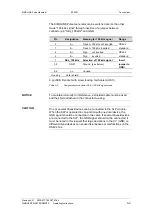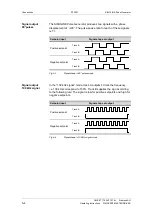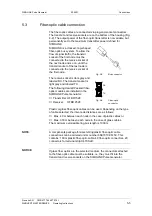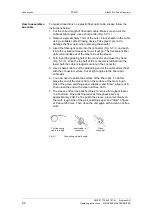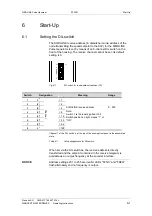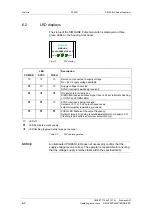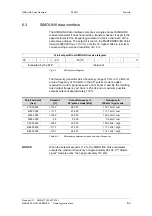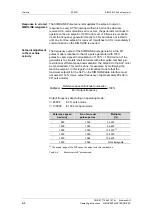
SIMOLINK Pulse Generator
02.2001
Product Description
Siemens AG
GWE-477 764 4070.76 J
SIMOVERT MASTERDRIVES
Operating Instructions
2-1
2
Product Description
In drive configurations with an "electrical shaft", simple speed-
synchronized auxiliary drives or other devices which require an actual
machine value proportional to velocity are frequently needed in addition
to the main position-controlled drives. These auxiliary drives and
devices have a pulse encoder input and read in the data supplied by a
pulse encoder mounted centrally on the line shaft. On drives with an
electrical shaft and flexible configuration, this central point is often
impossible to physically define. The SIMOLINK Pulse Generator (SLP)
thus simulates an encoder on the electrical shaft and supplies a central
actual machine value (machine velocity) which is generated from the
master setpoint. The electrical shaft with the position-controlled main
drives is implemented by means of SIMOLINK and MASTERDRIVES
Motion Control drives.
The SIMOLINK Pulse Generator uses a speed setpoint transported via
SIMOLINK to generate two pulse signals in quadrature of proportional
frequency (100 % = 25 kHz). These are supplied to further devices via
the RS422 (EIA422 standard). The frequency output corresponds to
that of a pulse encoder with 1000 pulses/rev and a speed normalization
of 100 % = 1500 rev/min.
A "100 kHz operating mode" can be activated optionally. Instead of the
signals in quadrature, one signal supplies the quadruple frequency
proportional to the setpoint (100 % = 100 kHz) and the other signal
supplies the sign.
The SIMOLINK transmission medium is a fiber-optic cable. Fiber optics
made of glass or plastic may be used. SIMOLINK has a ring-shaped
structure, with each node in the ring acting as a signal amplifier. A
maximum of 201 active nodes can be interconnected on the SIMOLINK
ring.
For further information about SIMOLINK, please refer to Chapter
"Communication / SIMOLINK“ of the SIMOVERT MASTERDRIVES
Compendium Motion Control, Order No.: 6SE7087-6QX50.
NOTE

















